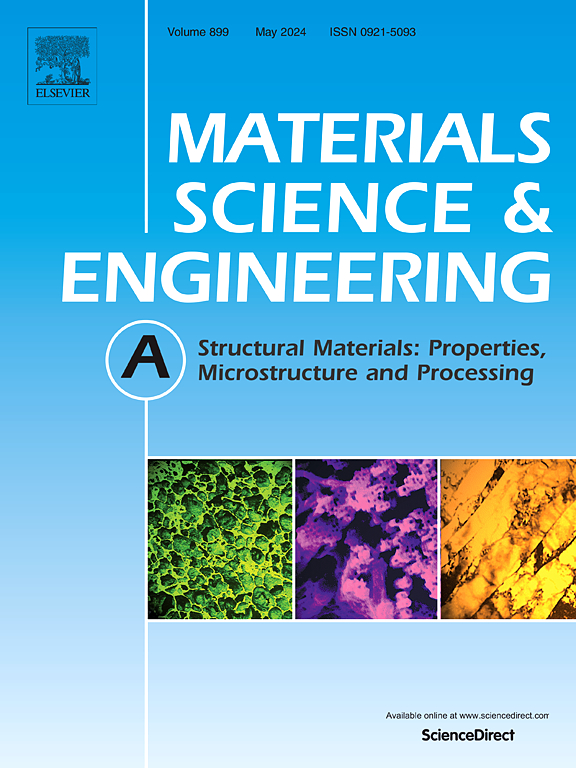Kink bands-mediated ultrahigh plasticity and sustained work hardening in a metastable β titanium alloy
IF 7
2区 材料科学
Q1 MATERIALS SCIENCE, MULTIDISCIPLINARY
引用次数: 0
Abstract
This study systematically investigated the role of kink bands (KBs) in achieving an exceptional strength-plasticity synergy in β-solutionized TB18 titanium alloy, where the tensile strength ranges from 769 to 790 MPa and elongation from 30 % to 42 %. The results show that the prolonged work hardening platform with the work hardening rate (WHR) of 590 MPa maintained over a significant strain range of 0.05–0.17, originating from the coordinated activation of {112}<111>β slip system and KBs. The KBs nucleate at intersections of ω-depleted dislocation channels, effectively relaxing stress concentration via lattice rotation. As the strain increased, the {112}<111>β slip system is continuously activated, promoting the generation of dislocation channels. Stress concentrations occur at the intersection of dislocation channels due to the high density of {112}<111>β dislocations, and KBs when β-matrix by reorienting to facilitate coordinated deformation. The V segregation at β/ω interfaces stabilizes dislocation channels promoting KBs proliferation is also discussed. This work provides a novel pathway for designing metastable β-Ti alloys through KBs engineering, surpassing the conventional trade-off between TWIP/TRIP-induced plasticity and low yield strength.
扭结带介导的亚稳β钛合金超高塑性和持续加工硬化
本研究系统地研究了扭结带(KBs)在β固溶TB18钛合金中实现卓越的强度-塑性协同作用的作用,其中抗拉强度范围为769至790mpa,伸长率为30%至42%。结果表明:{112}<;111>;β滑移系统与KBs的协同活化使加工硬化平台在0.05 ~ 0.17的显著应变范围内保持在590 MPa的加工硬化速率(WHR);KBs在ω-耗尽位错通道的交叉处成核,通过晶格旋转有效地缓解应力集中。随着应变的增加,{112}<111>;β滑移体系不断被激活,促进位错通道的产生。由于{112}<;111>;β位错密度高,应力集中在位错通道的交叉处,而β-基体通过重定向有利于协调变形时的kbs1。在β/ω界面上的V偏析稳定了位错通道,促进了KBs的扩散。这项工作为通过KBs工程设计亚稳态β-Ti合金提供了一条新的途径,超越了传统的TWIP/ trip诱导塑性和低屈服强度之间的权衡。
本文章由计算机程序翻译,如有差异,请以英文原文为准。
求助全文
约1分钟内获得全文
求助全文
来源期刊

Materials Science and Engineering: A
工程技术-材料科学:综合
CiteScore
11.50
自引率
15.60%
发文量
1811
审稿时长
31 days
期刊介绍:
Materials Science and Engineering A provides an international medium for the publication of theoretical and experimental studies related to the load-bearing capacity of materials as influenced by their basic properties, processing history, microstructure and operating environment. Appropriate submissions to Materials Science and Engineering A should include scientific and/or engineering factors which affect the microstructure - strength relationships of materials and report the changes to mechanical behavior.
 求助内容:
求助内容: 应助结果提醒方式:
应助结果提醒方式:


